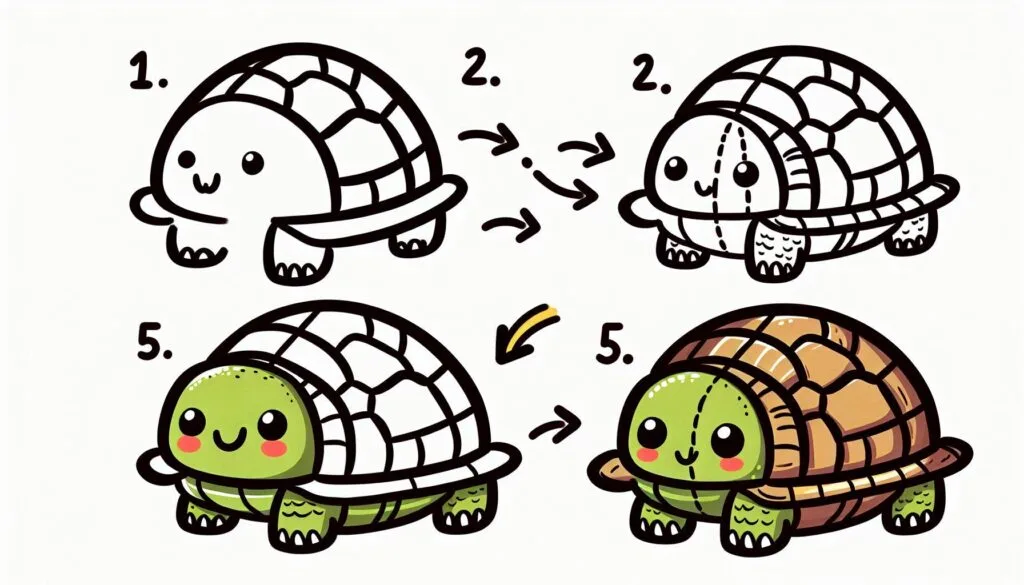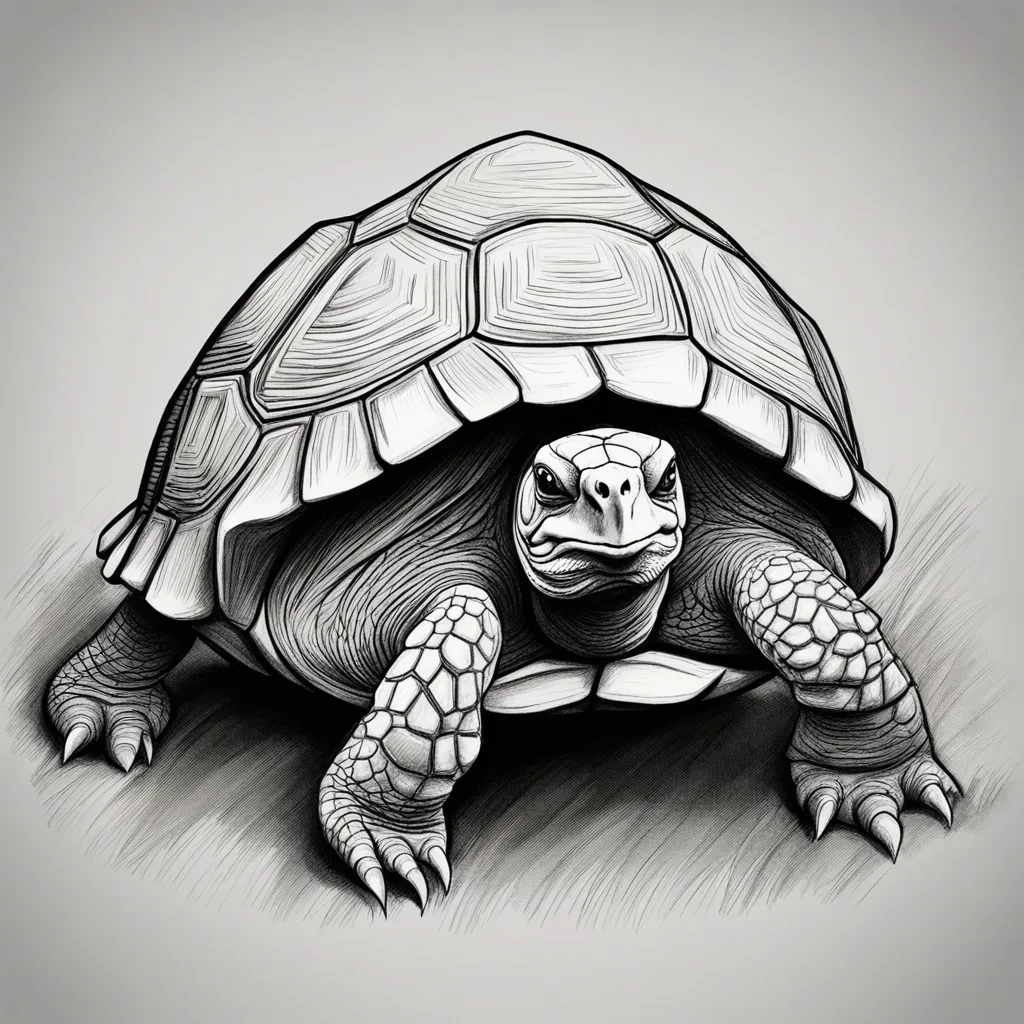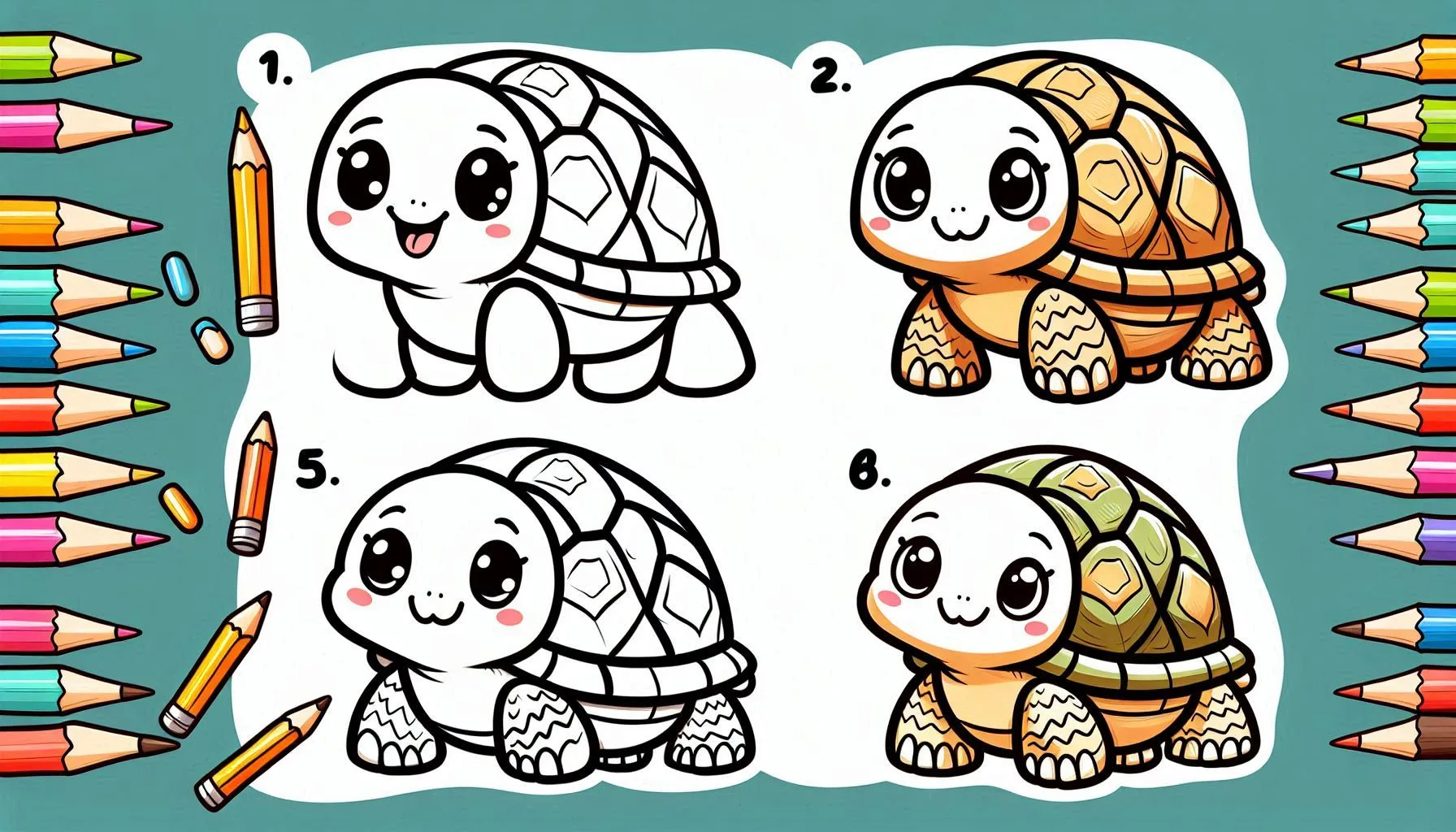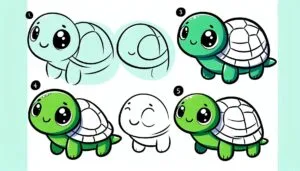Exploring the unique characteristics of a tortoise through drawing can be a wonderful experience. Tortoises are recognized for their unique shell, strong legs, and calm nature. In this guide, we’ll take you through the process of drawing a tortoise, paying close attention to its distinctive characteristics and incorporating creative elements. Let’s embark on an imaginative journey and bring this captivating creature to life on paper!
The Fascinating Anatomy of Tortoises
Tortoises possess a striking appearance, characterized by their curved shells, robust legs, and one-of-a-kind head structure. By gaining a deep understanding of their anatomy, such as their segmented shell and their leisurely limbs, you’ll be able to create a drawing that is both precise and captivating. By paying attention to these characteristics, you can truly capture the essence of this fascinating reptile.
The Joy of Capturing the Shell’s Texture and Shape
When it comes to drawing a tortoise, it’s all about capturing the intricate texture and shape of its shell. The shell is not only a form of protection, but also a defining characteristic of the tortoise’s identity. This can be a fulfilling endeavor, improving your artistic abilities and your knack for working with diverse textures and shapes. The more skillfully you capture these characteristics, the more lifelike and authentic your tortoise drawing will appear.
Discovering the Fascinating World of Tortoises Through Art Tortoises possess a captivating visual appeal and exhibit intriguing behaviors and adaptations. Exploring the unique appearance and ecological role of tortoises can be a fascinating experience. This theme highlights the educational aspect of art and the opportunity to explore new aspects of tortoise life through creative expression.
Steps: How to Draw a Tortoise
First, start by sketching the fundamental outline.
Begin by sketching the fundamental outline of the tortoise’s shell. Start with a sizable, curved oval or dome shape. The shell should have a wide and slightly flattened top, with a gentle curve. Create a smaller oval shape for the head, positioned at one end of the shell.
Step 2: Include the Head and Facial Features
Place the head at the front of the shell. The head should have a soft, rounded shape with a gentle curve. Place two small, rounded eyes on the head, and create a simple, curved line for the mouth. It’s important to ensure that the size of a tortoise’s head is in proportion to its shell.
Step 3: Now, let’s move on to drawing the legs.
Tortoises have strong, robust legs. Begin by sketching the front legs, creating two small, curved shapes that emerge from the sides of the shell. Include three or four petite, curved toes on each front foot. Position the hind legs further back, drawing them in a similar manner. The hind legs should be slightly larger and more robust, with three or four toes each.
Step 4: Enhance the Shell’s Texture and Add Intricate Details
To capture the intricate details of the tortoise’s shell, incorporate a series of gracefully curved lines and patterns to depict the individual segments. Divide the shell into hexagonal or pentagonal plates and sketch these patterns across the shell. Enhance the shading to bring out the curves and depth of the shell.
Step 5: Perfecting the Form
Opt for a darker writing utensil to carefully trace and perfect the outline of the tortoise. Make the lines of the shell, head, and legs smoother. Make sure the shell’s segments are clearly defined and balanced. Remove any unnecessary guidelines or overlapping lines to tidy up your drawing.
Step 6: Enhance the artwork with intricate details and subtle shading.
Take your drawing to the next level by incorporating intricate details like the texture of the tortoise’s skin and delicate shading. Use gentle, delicate strokes to depict the texture of the shell and the legs. Take note of the areas where shadows may appear, like beneath the legs and around the head, to add depth and dimension.
Step 7: Add some color to your tortoise
Now it’s time to add some vibrant hues to your tortoise! Opt for natural hues such as browns, greens, and yellows when selecting colors for the shell. Don’t forget to incorporate the unique patterns on the shells of tortoises into your coloring. Experiment with deeper hues to create shadows and highlights that bring out the depth and dimension of your artwork. Take note of the different areas of light and shadow in order to bring more energy and realism to your tortoise drawing.
Topic 1: The Fascinating Physiology of Tortoises
Exploring the anatomy of a tortoise through drawing allows you to appreciate its distinctive features, such as the domed shell, sturdy legs, and small head. Understanding these features enables you to craft a comprehensive and precise portrayal. Recognizing the allure of tortoise anatomy can improve both your artistic abilities and your understanding of these captivating reptiles.
Theme 2: Exploring the Excitement of Capturing the Shell’s Texture and Shape
The texture and shape of the tortoise’s shell can provide an enjoyable and fulfilling challenge for artists. Mastering these details requires creativity and skill, making it a great exercise for working with distinct textures and shapes. Find joy in the process of bringing the intricate patterns and depth of the shell to life in your artwork.
Theme 3: Discovering the Fascinating World of Tortoises Through Art
With their fascinating appearance and unique adaptations, tortoises provide an opportunity to delve into captivating aspects of reptile life. Exploring different colors and textures in your artwork can create a visually captivating and educational experience. This theme emphasizes the excitement of exploring different aspects of tortoise life through art.
In summary
Drawing a tortoise can be a fun and captivating experience that lets you capture the distinct features and textures of this intriguing reptile. By following the steps in this guide and paying close attention to its anatomy, texture, and colors, you can create a detailed and captivating tortoise drawing. Have fun exploring your artistic side and let your imagination run wild as you create a beautiful masterpiece!


Check out this super fun and simple guide to learn how to draw a chameleon with easy step-by-step instructions! This fun tutorial provides easy steps, allowing young creators to dive into their imagination while discovering the wonders of these amazing reptiles!





